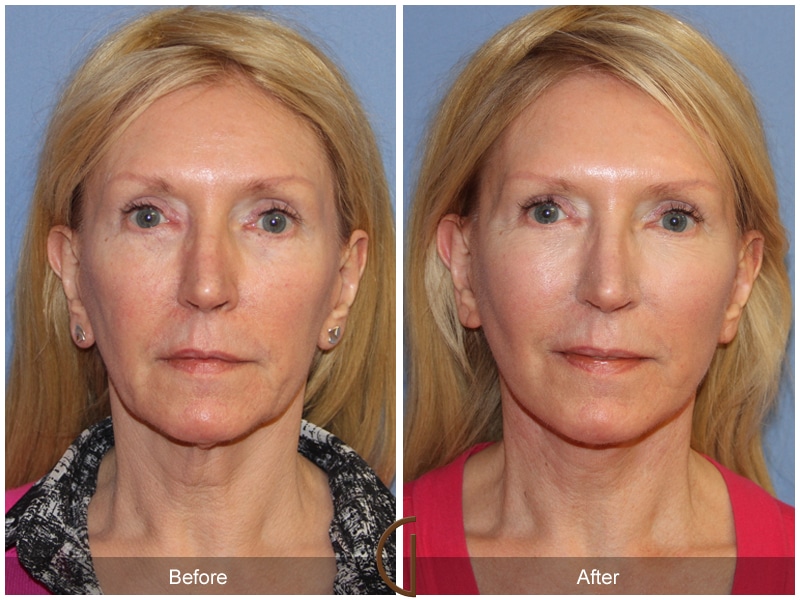SKIN CARE
How to Choose the Right Face Lift for Your Needs

As we age, the effects of time, gravity, and environmental factors can lead to sagging skin, deep wrinkles, and a loss of youthful contours in our face and neck. Facelift surgery offers a solution to these signs of aging, but with various types of facelifts available, it can be challenging to determine which one is right for your needs. This article provides a comprehensive guide to help you choose the right facelift, ensuring you achieve the best results for your unique facial structure and aesthetic goals.
Understanding Face Lifts
What is a Face Lift?
A face lift, or rhytidectomy, is a cosmetic surgical procedure designed to rejuvenate the face by lifting and tightening sagging skin and underlying tissues. The procedure addresses several signs of aging, including:
- Sagging skin in the midface and jawline
- Deep creases along the nose and mouth (nasolabial folds)
- Jowls and loss of definition in the jawline
- Loose skin and excess fat in the neck
Types of Face Lifts
There are several types of face lifts, each tailored to address specific areas and levels of aging. Understanding these different types can help you choose the one that best meets your needs.
1. Traditional Face Lift
What it Addresses: A traditional face lift is a comprehensive procedure that addresses significant signs of aging in the face and neck. It targets sagging skin, deep wrinkles, and jowls.
Procedure: The surgeon makes incisions around the hairline, continuing around the ears and possibly extending into the lower scalp. The skin is then lifted, underlying tissues and muscles are tightened, and excess skin is removed.
Recovery: Recovery typically takes several weeks, with most patients returning to normal activities within four to six weeks.
Ideal For: Individuals with advanced signs of aging who are looking for dramatic and long-lasting results.
2. Mini Face Lift
What it Addresses: Also known as a “weekend face lift,” this less invasive procedure focuses on the lower face and jawline, targeting mild to moderate sagging and wrinkles.
Procedure: The surgeon makes shorter incisions around the ears, lifting and tightening the skin and underlying tissues.
Recovery: Recovery time is shorter than a traditional face lift, typically one to two weeks.
Ideal For: Younger patients or those with early signs of aging who want subtle improvements with minimal downtime.
3. Mid Face Lift
What it Addresses: A mid face lift targets the middle portion of the face, particularly the cheeks and under-eye area.
Procedure: The surgeon makes incisions either in the lower eyelid or inside the mouth to lift and reposition the fat pads and muscles of the cheeks.
Recovery: Recovery takes about two to three weeks.
Ideal For: Individuals with sagging cheeks and deep nasolabial folds who want to rejuvenate the midface area.
4. Neck Lift
What it Addresses: A neck lift focuses on the neck area, addressing loose, sagging skin, and excess fat under the chin.
Procedure: The surgeon makes incisions around the ears and possibly under the chin, removing excess skin and fat and tightening the underlying muscles.
Recovery: Recovery time is similar to a traditional face lift, typically several weeks.
Ideal For: Those with a sagging neck and double chin who want to achieve a more defined jawline and smoother neck.
Factors to Consider When Choosing a Face Lift
Your Aesthetic Goals
Consider what specific areas of your face you want to address and the results you hope to achieve. Are you looking for subtle improvements or a more dramatic transformation? Discuss your goals with your surgeon to determine which type of face lift will best meet your needs.
Age and Skin Condition
Your age and the condition of your skin play a significant role in determining the most appropriate face lift. Younger patients with minimal sagging may benefit from less invasive procedures like a mini face lift, while older patients with more advanced signs of aging may require a traditional face lift.
Health and Medical History
Ensure you are in good overall health before undergoing any surgical procedure. Your surgeon will review your medical history to identify any potential risks or contraindications. Be honest about any medical conditions, medications, or lifestyle factors that could affect your surgery and recovery.
Recovery Time
Consider how much downtime you can realistically accommodate. Some face lift procedures, like the mini face lift, offer shorter recovery times, while others, like the traditional face lift, require more extended downtime. Make sure your schedule allows for adequate recovery.
Surgeon’s Expertise
Choosing a skilled and experienced surgeon is crucial for achieving optimal results. Look for a board-certified plastic surgeon with extensive experience in face lift procedures. Review before-and-after photos of previous patients and read testimonials to ensure you select a reputable professional.
Preparing for Your Face Lift
Consultation
The first step in preparing for your face lift is a consultation with your chosen surgeon. During this appointment, discuss your aesthetic goals, medical history, and any concerns you may have. The surgeon will evaluate your facial structure and skin condition to recommend the most suitable type of face lift.
Pre-Operative Instructions
Your surgeon will provide specific pre-operative instructions, which may include:
- Avoiding certain medications and supplements that can increase bleeding risk
- Quitting smoking at least several weeks before and after surgery
- Arranging for someone to drive you home and assist you during the initial recovery period
The Face Lift Procedure
Anesthesia
Face lift surgery is typically performed under general anesthesia or local anesthesia with sedation, depending on the extent of the procedure.
Incisions and Surgery
The surgeon makes the necessary incisions based on the type of face lift. The skin is lifted, and underlying tissues are repositioned and tightened. Excess skin is removed, and the incisions are closed with sutures.
Post-Operative Care
After the surgery, you will receive detailed post-operative care instructions, including:
- How to care for your incisions and drains (if placed)
- Medications to take to reduce pain and prevent infection
- When to follow up with your surgeon
Recovery and Results
Initial Recovery Period
The initial recovery period typically involves swelling, bruising, and discomfort, which can last for several weeks. Most patients can return to light activities within one to two weeks, but it may take several months for the final results to fully emerge.
Long-Term Results
Face lift results can last for many years, especially with proper skincare and maintenance. Non-surgical treatments, such as Botox and dermal fillers, can help prolong the effects of your face lift and keep your skin looking youthful.
Conclusion
Choosing the right face lift for your needs involves careful consideration of your aesthetic goals, skin condition, health, and lifestyle. By understanding the different types of face lifts and consulting with a qualified surgeon, you can make an informed decision that will help you achieve a more youthful and refreshed appearance. With the right approach and expert care, a face lift can provide long-lasting results and significantly enhance your confidence and quality of life.
FASHION
Why Pyjama Sets Are the Perfect Gift for Loved Ones

When it comes to gift-giving, finding the perfect present can often be a challenge, wrapping up feelings of affection, appreciation, and thoughtfulness in one neat package. This is where uk pyjamas sets step in as a delightful solution for many. Pyjama sets not only exude comfort and style but also offer a practical and thoughtful gift option that is bound to be appreciated by anyone who enjoys a cosy night in or appreciates high-quality sleepwear.
One of the key reasons pyjama sets make an exceptional gift is their universal appeal. Whether you are shopping for your partner, a family member, or a cherished friend, everyone enjoys the sensation of slipping into a comfortable pair of pyjamas after a long day. With the vast range available, you can select a set that caters to individual tastes, be it classic stripes, playful patterns, or elegant satin finishes. This adaptability ensures that pyjamas can suit any personality, much like a tailored gift with a personal touch.
Moreover, offering pyjama sets as gifts can be particularly meaningful given the rich symbolism tied to them. Pyjamas are synonymous with relaxation, self-care, and unwinding from the hustle and bustle of daily life. By gifting a set, you are essentially offering a token of comfort and solace, indirectly expressing your wish for the recipient’s well-being and personal peace. In a world where stress levels run high, such moments of relaxation are invaluable, making pyjamas a gift that resonates well beyond the fabric.
Another compelling reason to consider pyjama sets as gifts is their practicality. Many people often overlook their sleepwear, defaulting to old t-shirts or unsuitable nightwear. A well-chosen pyjama set can uplift one’s bedtime routine and enhance sleep quality. Quality materials like cotton and bamboo offer breathability and comfort, contributing to a better night’s sleep. By gifting pyjamas, you are not only providing luxury but also encouraging better sleep hygiene, a gift that speaks volumes about caring for loved ones’ health.
Furthermore, the act of gifting pyjama sets can reflect environmental consciousness and support ethical fashion. There is a growing trend towards responsibly sourced materials and ethical clothing production, which extends to nightwear as well. By choosing eco-friendly pyjama sets, you align your present with values of sustainability and care for the planet, offering not just physical comfort but peace of mind as well.
The act of wrapping up pyjamas itself carries an aesthetic charm. Lush fabrics and beautiful prints can be packaged into an appealing gift box, enhancing the overall gifting experience. This makes the unboxing moment special, creating an emotional connection that traditional gifts may not always achieve. Not to mention, pyjamas are traditionally associated with festivities and holidays, making them a timeless addition to any gift list.
In conclusion, pyjama sets stand out as the perfect gift for loved ones because they combine practicality, comfort, and thoughtfulness. They are more than just a component of the wardrobe – they symbolise care, rest, and personal moments of serenity. Whether you are spoiling someone special or treating yourself, the gift of pyjamas is an intimate gesture that transcends mere materialism. So, next time you scratch your head over what present to get someone, remember that a pyjama set offers warmth and comfort wrapped in a gift tag, ready to bring a smile and snooze to those you care about.
FASHION
How Does Rare Carat Help You Find a Unique Engagement Ring?

Rare Carat is certain that you are ready to make a life-altering purchase; a feeling that rarely occurs. Customer testimonials and trust indicators strongly recommend Rare Carat as a secure location for purchasing diamonds. This article will demonstrate how the brand can assist you in your pursuit of high-quality engagement rings as the brand enables you to check different diamond rings that fit your specifications.
Buy Engagement Rings Easily
The combined engagement ring’s compilation at Rare Carat beat the expectations as it reflected every customer’s desire to preserve the story within two pieces that are worn for eternity. When choosing a band, there are various styles to consider, and the website is designed to suggest the best-suited band for your public persona. If you want the most exquisite diamond ring that will brag about your love in public, visit Rare Carat today.
Unparalleled Tools for Sound Decision Available
Rare Carat claims to be among the companies that have the best tools aimed at improving the ease of users in making a decision. On top of that, its automatic diamond search feature uses AI technology to browse through thousands of listings to help you find the diamonds that suit your preferences. Additionally, Rare Carat promotes integrity through objective diamond assessments, which are grading reports, to give you everything you need to see in terms of quality and value. Also, the site has a modeling feature for a ring that helps customers to see how the engagement ring will look before they buy it.
Reliable Advice and Information
Education on diamond rings is also one of the most important aspects of Rare Carat, which distinguishes it among others. The platform hosts a plethora of knowledge for diamond buyers who want to learn about its grading, setting, and modern-day marketing. Rare Carat has made provisions for numerous articles, guides, and even enabled its clients to speak with live certified gemologists, who would certainly assist them in more effectively making a purchase. With this level of commitment to ensuring their cause, every customer can feel in control throughout the buying process.
Competitive Pricing and Unmatched Value
With Rare Carat’s one of a kind offering, you know that you are making the best investment. This is because the firm specializes in finding many diamonds among the most trustworthy retailers that will allow you to purchase reasonable and quality ones. It is further enhanced by the fact that the platform is totally committed to ethical practices in the sourcing of these diamonds, allowing you to not just procure a beautiful engagement ring, but also participate in the eco-friendly movement.
Customer-Centric Experience
Rare Carat’ s customer satisfaction focus extends to every service that they offer. It’s certain that the design of the website, as well as its structure, is convenient for users, and in case of problems, their personal manager is ready to help solve all issues. Plenty of customers often recommend Rare Carat to others because the diamond purchasing process was made easy and enjoyable by the platform. Negative reviews do not exist for Rare Carat simply because there is not a single unsatisfied customer who would regret working with the firm for such a considerable purchase.
Transformative Designs
In addition to being a marketplace for engagement rings, Rare Carat is a visionary that can help you realize your ring designing fantasies. With their customizable settings and a large variety of diamonds, Rare Carat makes it possible for you to create a one-of-a-kind ring, which in this case, is for the engagement. From the band material and even the diamond, the platform provides unique tools that make sure that everything about the ring is in accordance with your idea.
How to Engage with Rare Carat
If you are on the lookout for the perfect ring that can be used for your engagement, then Rare Carat should be your first special subject. Few expected it, but the company and its innovative approach, which combines technology, education, and high-quality customer service, is much better than ordinary jewelers’ approach in principle. Check Rare Carat now and look for the perfect engagement ring that can articulate your love and devotion to your partner.
CRYPTO
Licensed Electricians: Ensuring Safety in Electrical Repairs

Electricity is essential to modern life, powering everything from lighting to major appliances. However, proper handling requires great care, as electrical work can involve significant safety risks if not managed correctly. Licensed electricians play a critical role in ensuring that electrical repairs, installations, and maintenance are conducted safely and in compliance with regulations. We will explore why hiring best electrician in Myrtle Beach is essential for safety, reliability, and long-term performance.
Why Licensing Matters for Electrical Work
Electrical work requires a thorough understanding of complex systems, safety codes, and proper procedures to avoid hazards. Licensed electricians undergo rigorous training and education, ensuring they have the technical knowledge to handle various electrical tasks safely. They also need to pass examinations and adhere to national and local codes designed to prevent accidents such as fires, shocks, and system failures.
When you hire a licensed electrician, you choose someone legally authorized to perform electrical work. Licensing ensures the electrician has the qualifications and experience to complete the job properly. They are trained to identify potential dangers, such as faulty wiring, overloaded circuits, or outdated systems, and resolve these issues before they escalate. Additionally, licensed electricians must stay updated with changing industry standards, which helps them apply the latest safety protocols and technology during repairs or installations.
On the other hand, unlicensed electricians may need more knowledge or training to meet these safety standards. Although hiring an unlicensed worker may seem cost-effective initially, it can lead to subpar work, safety hazards, and higher costs in the long run. Poorly executed electrical repairs can result in frequent outages, property damage, and injuries. By hiring a licensed professional, you safeguard your home or business while ensuring compliance with insurance and legal requirements.
Protecting Homes and Businesses with Licensed Electricians
Electrical repairs are not just about fixing problems—they are about preventing them from occurring in the first place. Licensed electricians excel at identifying hidden dangers and making the necessary upgrades or repairs to maintain a property’s safety. Whether repairing a broken outlet, replacing old wiring, or installing a new circuit breaker, their expertise helps ensure your electrical systems operate smoothly and securely.
One key benefit of hiring a licensed electrician is their ability to conduct detailed inspections. These inspections can identify underlying issues that go unnoticed, such as frayed wires or improper installations. Such problems can lead to power outages, fires, or even injuries, especially in homes with aging electrical systems. By addressing these issues proactively, licensed electricians provide peace of mind and protect against potential disasters.
Licensed electricians also understand the importance of adhering to building codes. These regulations are in place to ensure that electrical systems meet safety standards and are suitable for the intended use of a property. When you hire a licensed professional, you can trust that the work will comply with these codes, preventing legal and financial complications in the future. This is particularly crucial for businesses, as non-compliance can lead to fines, insurance issues, or temporary closure.
Another advantage is the long-term reliability of the work performed by licensed electricians. Their training and adherence to safety protocols ensure that repairs and installations are durable and efficient. This means fewer disruptions, reduced energy consumption, and a lower likelihood of costly repairs.
The Importance of Insurance and Accountability
Licensed electricians provide more than just technical knowledge—they also offer accountability and protection. Because they must carry liability insurance, hiring a licensed professional ensures you are covered if something goes wrong during the project. This insurance protects the electrician and the property owner, reducing the financial risks associated with accidents or damages.
Additionally, licensed electricians are bound by legal and ethical standards, which means they are accountable for the quality of their work. If an issue arises after a project is completed, a licensed professional typically addresses the problem as part of their commitment to customer satisfaction and compliance. This level of accountability is rarely guaranteed when working with unlicensed individuals who may have different obligations or resources to fix mistakes.
When it comes to safety, insurance is a critical factor. Electrical repairs often involve risks such as fire hazards or accidental injury. A licensed electrician’s insurance policy ensures that you are not liable for any accidents on your property. This protection is invaluable, especially for larger projects or commercial properties with higher stakes.
Licensed electricians are indispensable for ensuring electrical repairs and installations’ safety, reliability, and efficiency. Their training, accountability, and adherence to safety standards make them the ideal choice for handling electrical systems in homes and businesses. We have explored why hiring licensed electricians prevents hazards, ensures compliance, and delivers long-term reliability and peace of mind. Choosing a licensed professional is more than meeting legal requirements; it is also about protecting lives, property, and investments. Licensed electricians contribute to a safer and more efficient future for everyone by prioritizing safety and quality.

 Cartoon1 year ago
Cartoon1 year agoUnlocking the Potential of Nekopoi.care: A Comprehensive Guide

 Game1 year ago
Game1 year agoExploring Aopickleballthietke.com: Your Ultimate Pickleball Destination

 BUSINESS1 year ago
BUSINESS1 year agoWhat Companies Are In The Consumer Services Field

 BUSINESS11 months ago
BUSINESS11 months agoUnraveling the Mystery of 405 Howard Street San Francisco charge on Credit Card

 HOME IMPROVEMENT1 year ago
HOME IMPROVEMENT1 year agoVtrahe vs. Other Platforms: Which One Reigns Supreme?

 TECHNOLOGY12 months ago
TECHNOLOGY12 months agoThe Guide to Using Anon Vault for Secure Data Storage

 ENTERTAINMENT8 months ago
ENTERTAINMENT8 months agoUnderstanding Bunkr Album: A Comprehensive Guide

 ENTERTAINMENT1 year ago
ENTERTAINMENT1 year agoThe Epic Return: Revenge of the Iron-Blooded Sword Hound
















